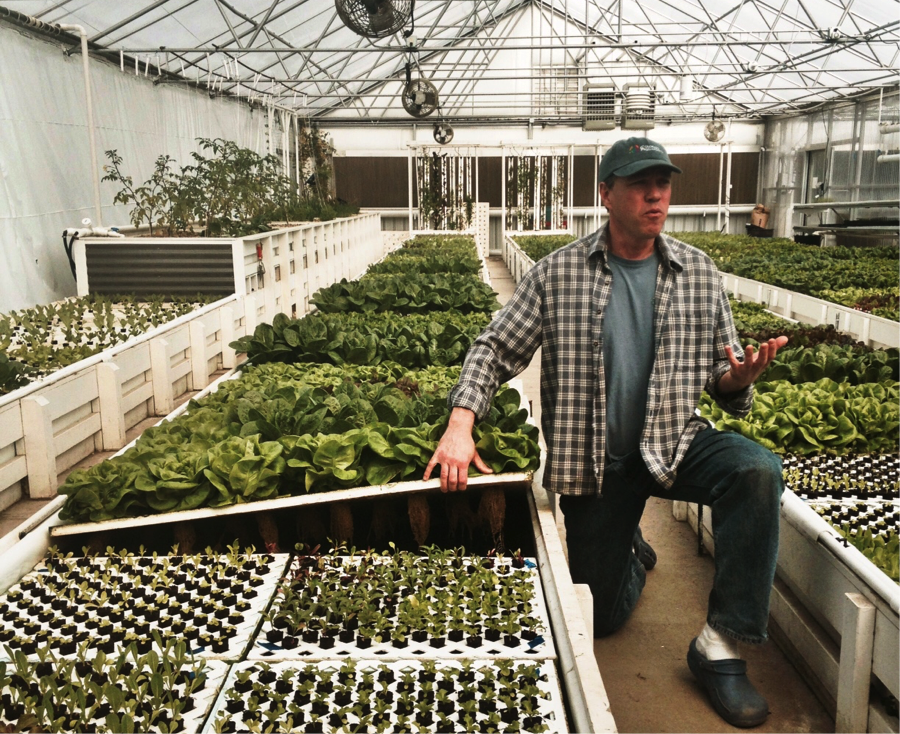Colorado’s Most Polluted Zip Code Battles Food Scarcity
The Elyria-Swansea neighborhood is in the most polluted zip code in the entire state of Colorado. Designated by the EPA as a hazardous waste area, it sits along the edge of I-70 and in the sulfuric shadow of a Purina dog food plant. The neighborhood is geographically isolated, cut up by the I-70 viaduct east to west and train tracks that slice it through north to south. The picturesque beauty of Colorado doesn’t apply here as oil refineries, warehouses, industrial buildings and service yards sprawl through the area, smokestacks making up the skyline.
Living in this urban industrial dump that was never designed as a neighborhood are over 7,000 people, 83% Hispanic or Latino, crammed into 1,700 households with no grocery store for miles.
Traditional urban farming practices won’t work in Elyria-Swansea. Years of pollution have made growing produce in the local soil unsafe so a local start-up has turned to the power of hydroponics and aquaculture to grow produce year round for the local community.
The GrowHaus takes up three residential lots right next to the train tracks that cut through Elyria-Swansea. The corrugated metal exterior of the 20,000 square foot space give passersby the impression that the greenhouse is being used for less noble purposes than food production. Inside it is immediately apparent that you’ve entered an oasis of good food and strong community. Walls are decorated with colorful banners and posters, signs appear in both English and Spanish and the trickle of fresh water reaches you from the aquaponics tanks towards the back of the building as a bi-lingual volunteer greets you at the door.
Perusing the marketplace of fresh, local produce, the system of The GrowHaus appears. Produce is offered on a sliding scale with a range of prices displayed beneath each item: Living lettuce $1.50 to $4.00 per head, locally made tortillas $1.75 to $3.50 per 12, a family sized box of food including fruits, vegetables, bread, eggs and dry goods $20.00 to $37.50. Residents of the 80216 zip code automatically pay cost. Other shoppers like those who come in for tours, classes or just out of curiosity are asked what they can afford. The market accepts cash, check, even SNAP benefits as they dismantle the hurdles to quality produce for their community.
“It is all about seeing how sustainable we can be,” explains JD Sawyer who is part of the Colorado Aquaponics team, which runs a 3,000 square foot operation within the building. The facility provides produce to nearby grocery stores and restaurants and fish to select restaurants within a 5-mile radius as part of The GrowHaus revenue. Decisions in the space actively balance the mission of The GrowHaus to produce good food for the neighborhood with being a local supplier concerned with yield and risk like any farmer.
After a short time inside you forget you are in one of the poorest neighborhoods in Denver. Leafy greens growing in rows through the hydroponics area are bordered by edible flowers, harvested and shipped the same day to nearby restaurants. New seedlings line the edges of the greenhouse walls, promising a good crop in just a few months time.
Every Monday The GrowHaus offers free groceries and cooking classes to 50 families in need from the neighborhood. They distribute over 100 food boxes each week to families who pay for them on the sliding scale. Throughout the month free classes are offered to residents in everything from cooking to micro-business. A partnership with a local elementary school brings children and families into the space to learn about healthy eating and growing food. The space is filled with the sweet smell of opportunity.
Since their start in 2009 they have received additional capital, renovation and grant funding from the Colorado Office of Economic Development, the Colorado Health Foundation and the USDA Farmer’s Market Promotion program. Donations and a strong volunteer base help make the operations possible.
Can alternative farming make a big enough dent in an impoverished neighborhood, or are these feel-good vibes for the naïve outsider? Let us know your thoughts on Twitter @StarterNoise



